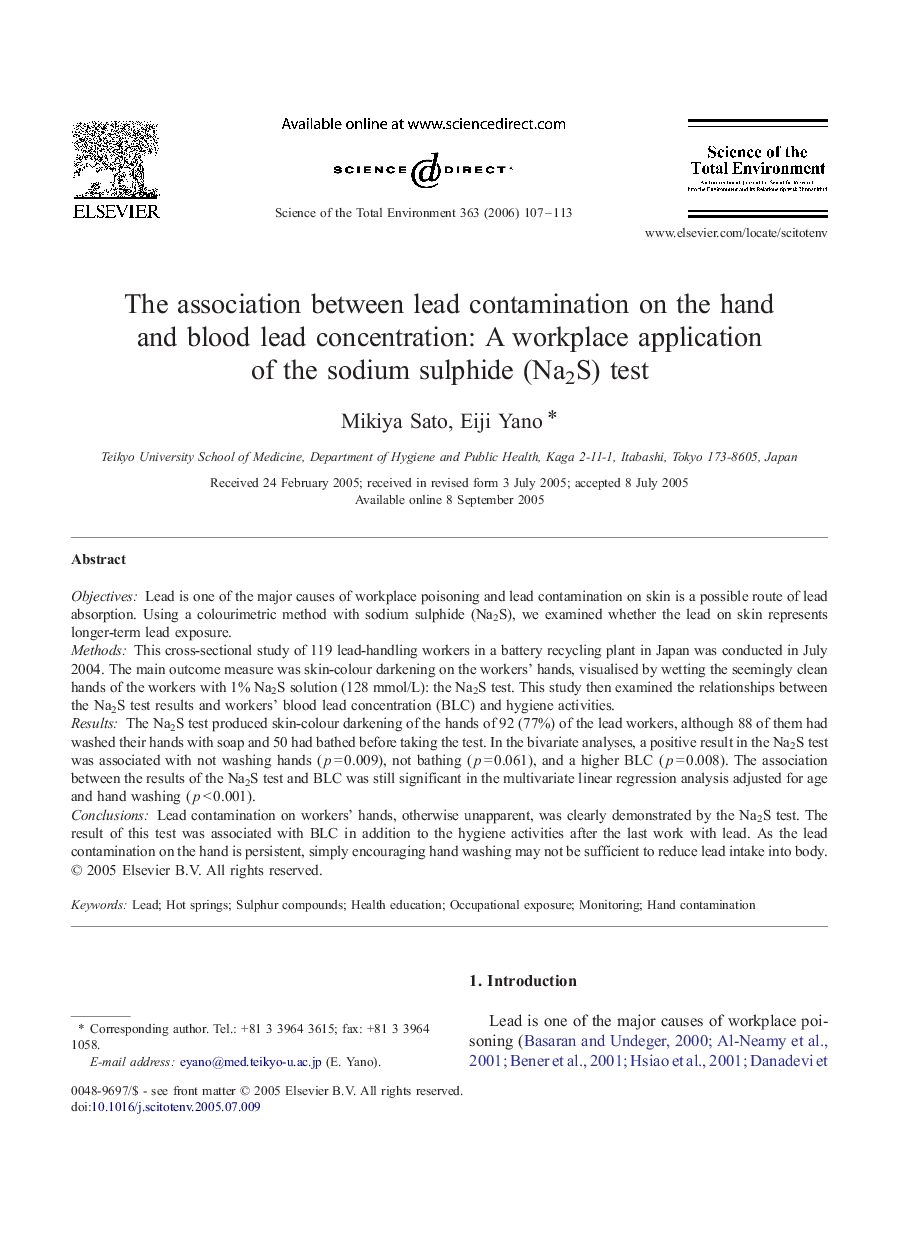| Article ID | Journal | Published Year | Pages | File Type |
|---|---|---|---|---|
| 4434267 | Science of The Total Environment | 2006 | 7 Pages |
ObjectivesLead is one of the major causes of workplace poisoning and lead contamination on skin is a possible route of lead absorption. Using a colourimetric method with sodium sulphide (Na2S), we examined whether the lead on skin represents longer-term lead exposure.MethodsThis cross-sectional study of 119 lead-handling workers in a battery recycling plant in Japan was conducted in July 2004. The main outcome measure was skin-colour darkening on the workers' hands, visualised by wetting the seemingly clean hands of the workers with 1% Na2S solution (128 mmol/L): the Na2S test. This study then examined the relationships between the Na2S test results and workers' blood lead concentration (BLC) and hygiene activities.ResultsThe Na2S test produced skin-colour darkening of the hands of 92 (77%) of the lead workers, although 88 of them had washed their hands with soap and 50 had bathed before taking the test. In the bivariate analyses, a positive result in the Na2S test was associated with not washing hands (p = 0.009), not bathing (p = 0.061), and a higher BLC (p = 0.008). The association between the results of the Na2S test and BLC was still significant in the multivariate linear regression analysis adjusted for age and hand washing (p < 0.001).ConclusionsLead contamination on workers' hands, otherwise unapparent, was clearly demonstrated by the Na2S test. The result of this test was associated with BLC in addition to the hygiene activities after the last work with lead. As the lead contamination on the hand is persistent, simply encouraging hand washing may not be sufficient to reduce lead intake into body.
